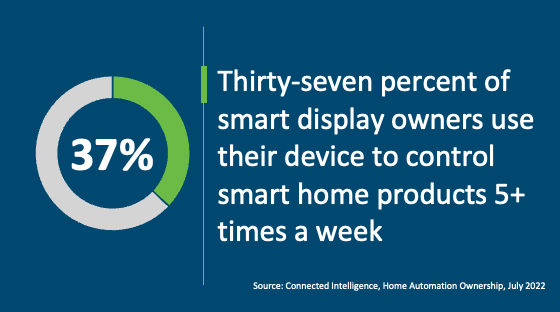
Another Step Forward for Matter
With the introduction of iOS 16.1 and iPad 16.1 developer betas last week, it has been confirmed that “Matter Accessories” will be coming to Apple iPhones and iPads. In addition, Google’s Google Home Developer Console, which helps developers add Matter devices to its platform, also went live last week. All three major US smartphone and tablet manufacturers (and Amazon) have stated their devices will be Matter controllers- meaning they can onboard Matter devices to a home’s network.
The NPD Take:
- This is encouraging news that Matter devices will be available before the end of 2022. With mentions of Matter showing up in early releases of new operating systems, the groundwork is being laid for greater integration and compatibility for these new devices.
- The inclusion of Matter in the operating systems also signals to consumers that Matter affiliated products are coming to market which will help drive greater awareness.
Nest Speakers Now Detect Your Presence
Through a variety of optical sensors and occupancy sensors embedded in its smart thermostats, smart locks and security systems, the Google Home platform can tell if someone is moving around in the house and can infer that someone has entered or exited as an entryway opened. This manner of detection has its limits - especially if the device is in a low traffic area of the home. Last week, an update to the Nest Audio and Nest Hub products activated presence sensing in those products, giving Google more ways to understand movement and presence in the home.
The NPD Take:
- Since Nest Audio and Hub devices tend to be installed in conspicuous places in the home such as kitchens, family rooms, and living rooms, the addition of presence detection will help augment automatic scenes and settings (instead of approximating presence through a lock which could be locked when users are still inside – a speaker in the kitchen can see that users are still in the house).
- Nest speakers and displays will detect touch or voice interactions while second generation Nest Hubs will use a Soli sensor - a miniature radar that detects human motion and movements - to evaluate presence.


